The 2022/23 was a roller coaster for Bournemouth, which ended with them staying in the Premier League, finishing in the 15th position.
However, the start of that campaign wasn’t the happiest time for the team and fans, with the sacking of Scott Parker after losing against Arsenal, Manchester City, and Liverpool for a combined 16-0.
At the time, it was wild to think that Parker would be sacked, as these matches were too difficult to measure his responsibility in the results.
Three days after receiving nine goals at Anfield, the former Fulham boss was sacked, and Gary O’Neil took over as the interim manager.
It resulted in a significant change, with O’Neil registering no defeats after six matches and staying as the manager for the season, saving them from relegation and playing solid football.
They managed to win games against Liverpool and Tottenham, with the likes of Dominic Solanke, Philip Billing, Dango Ouattara, and Marcus Tavernier having favorable seasons.
Finishing in 15th was great news for the Cherries project — they scored 37 goals from 43 xG and conceded 71 goals, with, obviously, targets to lower that number this year.
This Bournemouth tactical analysis will give an explanation of their tactics and an analysis of what they approach in several phases of the game, in the form of a Bournemouth scout report.
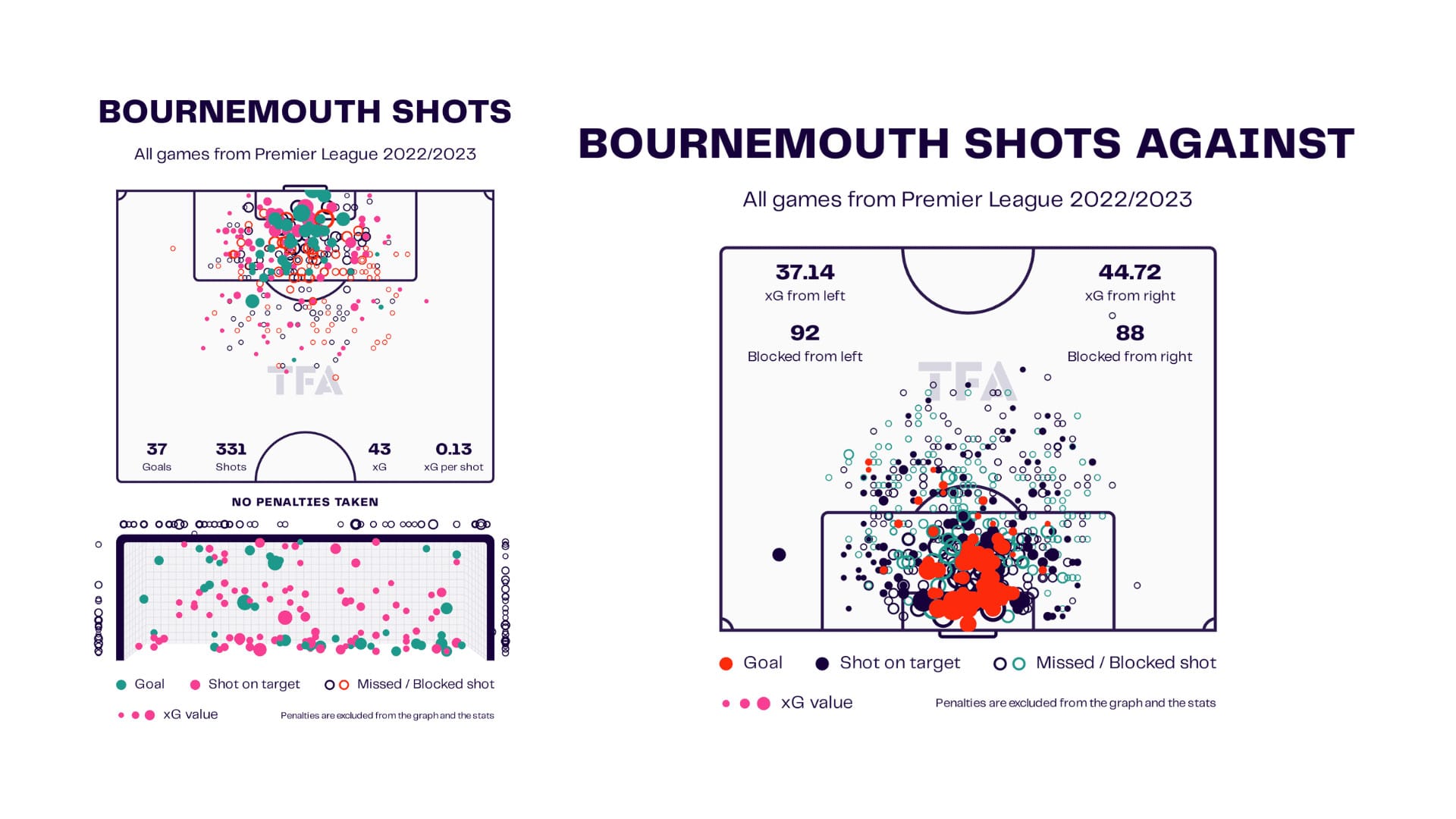
Nevertheless, Bournemouth kept on surprising us while the 22/23 season closed down, as Gary O’Neil and the club parted companies.
All this is due to the signing of one of the most exciting coaches in the world of football, Andoni Iraola.
They’ve been backing up with several signings to improve the squad depth.
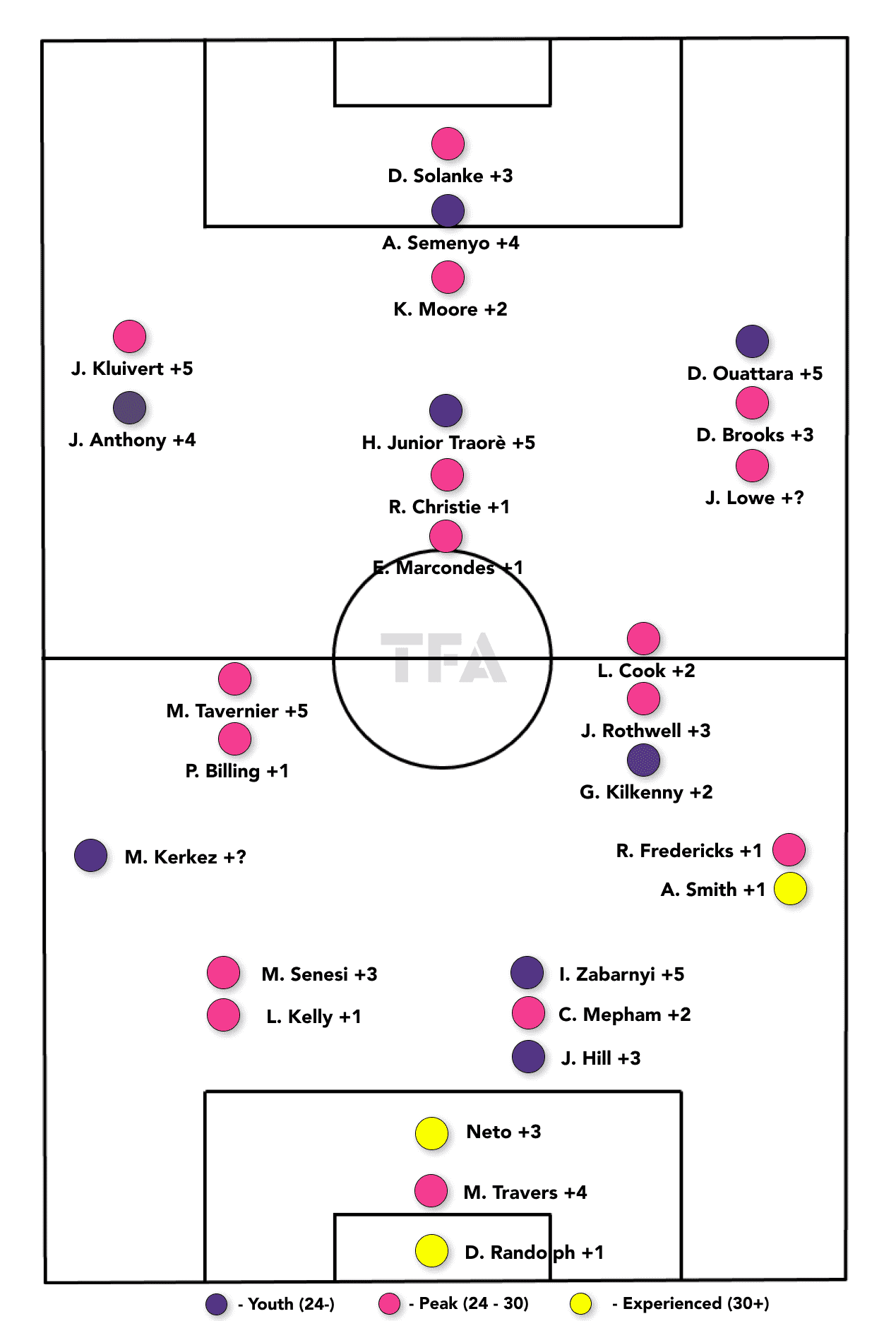
With incoming like Hamed Traoré, Milos Kerkez, and Justin Kluivert, Bournemouth has started creating a solid squad with suitable profiles for Iraola.
However, expected departures such as Phillip Billing would be a massive loss, and they’d have to look for a competent replacement.
The biggest loss they have suffered until the moment of writing is Jefferson Lerma, who hasn’t been replaced.
Using our xGOLD Team tool, we would propose Eric Martel (88% fit) and Michal Sadílek (87% fit) as players for the club to consider as replacements for Lerma and Billing (if he leaves).
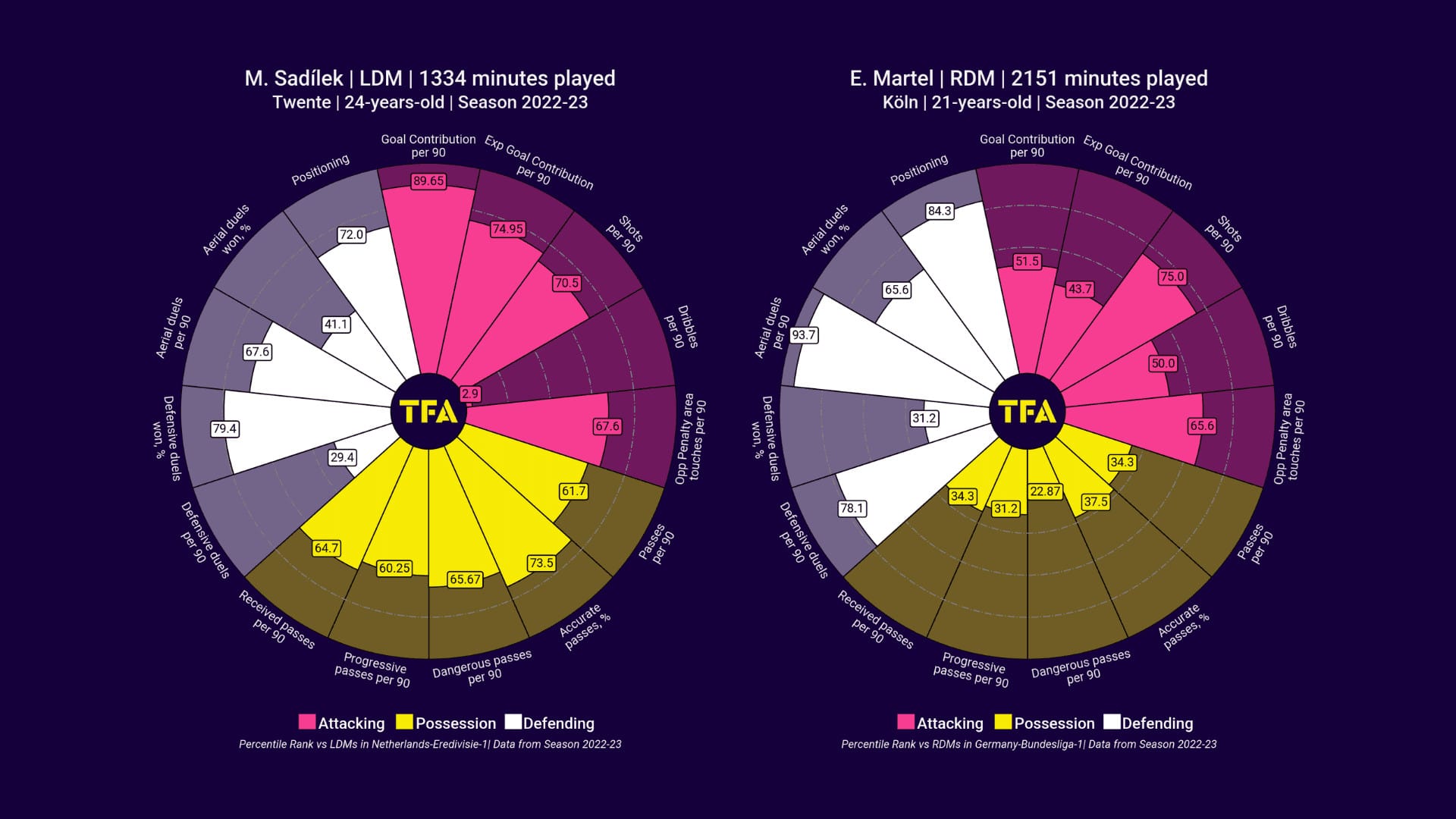
The Köln midfielder shows excellent defensive skills, combined with aggressivity to take the ball and dribble/penetrate the final third.
Sadílek, on the other hand, is a more possession-based midfielder who’s dynamic in the height of his positioning and can control the tempo for his team, progressing with positive technique.
Attacking Phase
Under Gary O’Neil, Bournemouth were a direct team who sat in a mid-low block, waiting for the right moment to counterattack with the likes of Tavernier or Billing releasing through passes to rapid and frenzy players such as Ouattara and Solanke.
We were used to seeing long balls being delivered from defenders, looking for Billing/Solanke to hold up and then create a play through the second balls.
They coordinated greatly to create space for themselves and took those zones quite well.
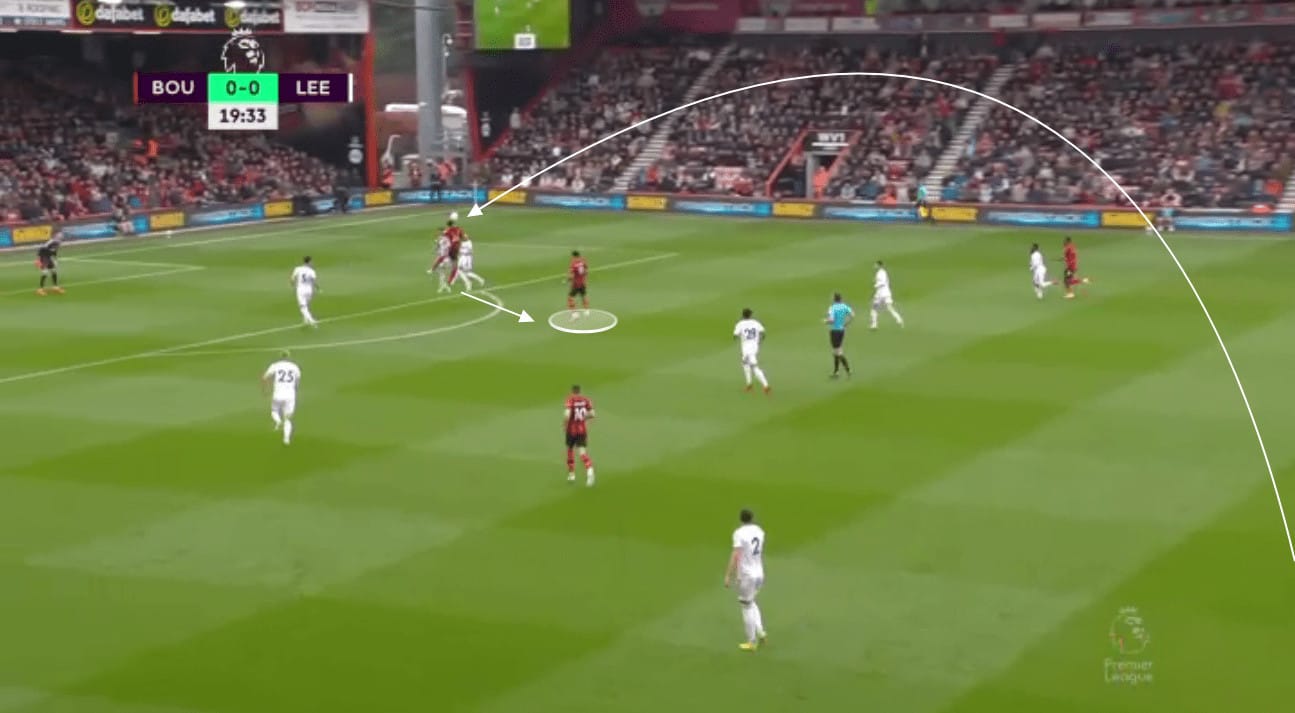
In Figure 4, we can take a look at what we’re pointing out through Bournemouth’s patterns of attack last season, with Billing getting in Solanke’s spot and the striker receiving while facing the goal, subsequently driving forward and assisting Jefferson Lerma, who joined at the edge of the box.
These movements were crucial and earned several points for the Cherries, as their abilities to win long balls and their differentia to dribble and take on opponents are of high quality.
Another of the critical points of Bournemouth’s last season was how they attracted the rival’s pressure before releasing long passes in behind the midfield line, where players like Marcus Tavernier or Dominic Solanke felt comfortable receiving, turning, and driving into space.
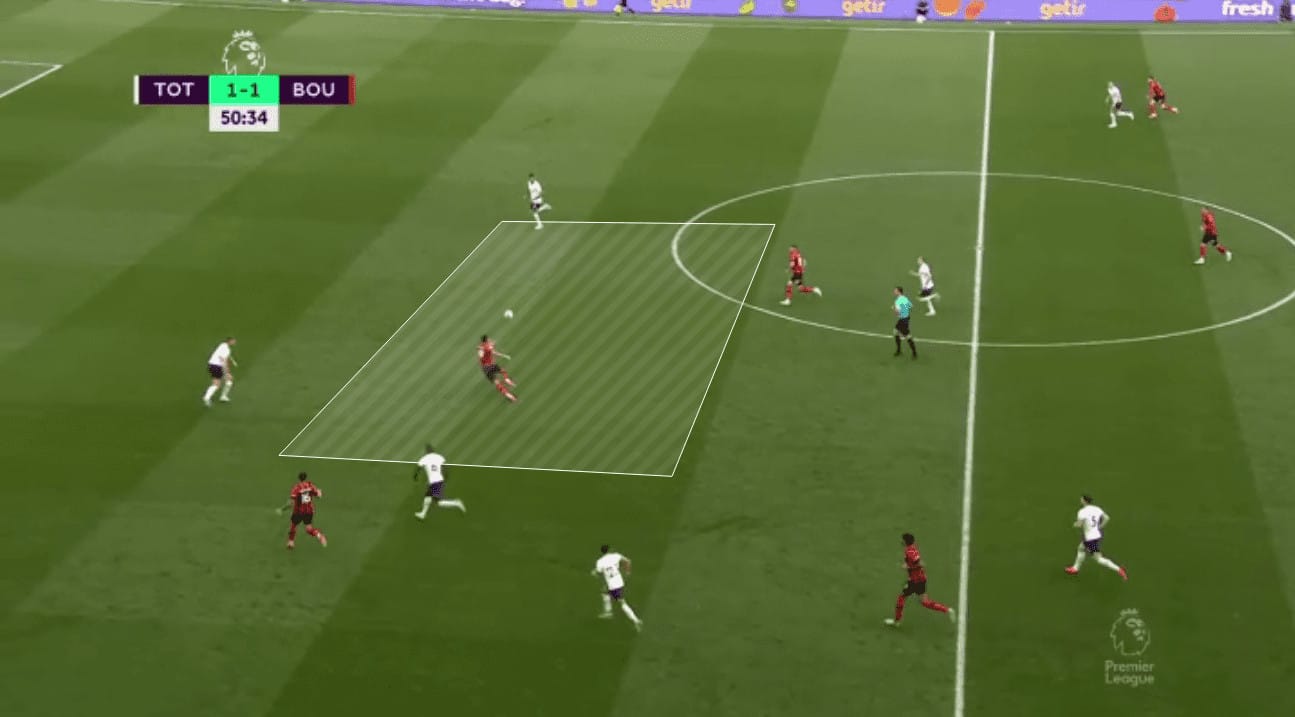
We can see in the image above that Solanke received too much space in front of the Tottenham defenders, where he turned, drove, and created a quick link at the edge of the box before scoring.
O’Neil’s ideas were simple, effective, and rapid to take.
Players should have a high IQ to command the transitions and take the right decision to score in the few chances they’d create.
However, they had games as well where they needed to dominate the possession, and the ideas weren’t flowing as much as they wanted to.
That’s where Tavernier and Ouattara unstuck several matches with their individual technique to create shooting angles in congested areas and displayed the ball-carrying capacities to slide through the flanks into the box.
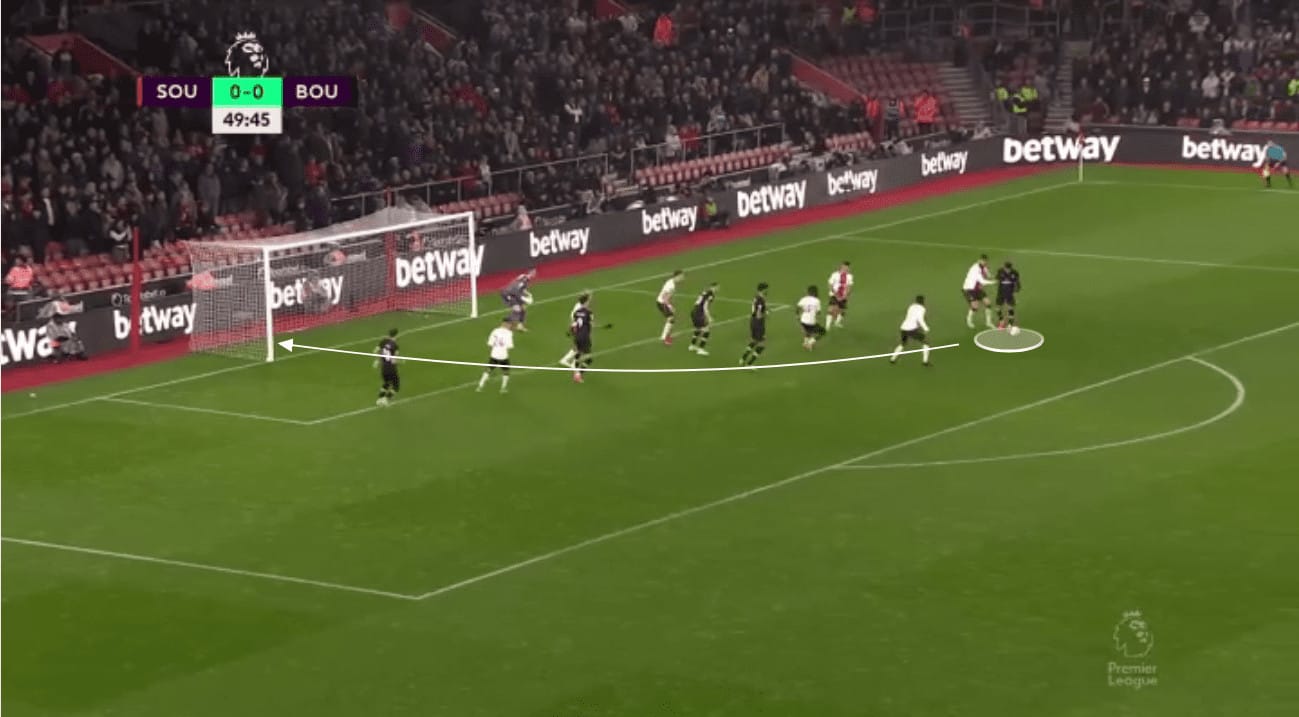
With a congested penalty box, Marcus Tavernier was able to find a small gap to shoot with his left foot, something we tended to see on several occasions last season, with his powerful striking and technique to find the bottom and far corners of the goal.

An example of Dango Ouattara’s acceleration and dribbling to create chances or win matches was his assist against Liverpool, where we can see in the figure above that he dribbled past Virgil van Dijk to assist Phillip Billing.
It’s not ridiculous to think that Bournemouth will still work in chances and movements like this under Iraola.
They have an exciting squad that concluded last season with a fantastic understanding, working on dynamic off-the-ball movements to shake the opposition’s lines in counterattacks or build-ups, where their most common pattern was to find gaps between defenders and midfielders, sending passes into their forwards to drive into the box.
All this just makes it clear why Bournemouth sacked Gary O’Neil, going from options such as Graham Potter to Andoni Iraola.
They want their club to turn into a more modern football project, which shows a specific set of ideas with the ball on the field while adapting to the age and wave of these positional and possession-based principles.
Defensive Phase
Gary O’Neil deployed constantly, depending on the opponent’s context with the ball, a mid-low block.
At times he could raise the height of the block not to allow the play into midfielders in the middle third, but it never felt like a high press that made the rival team unable to progress.
Bournemouth’s mid-block was irregular, having solid matches where they felt comfortable inside a 4-4-2 or 4-5-1, but teams with principles or players that could break lines, especially through the central channels, disrupted their intentions.
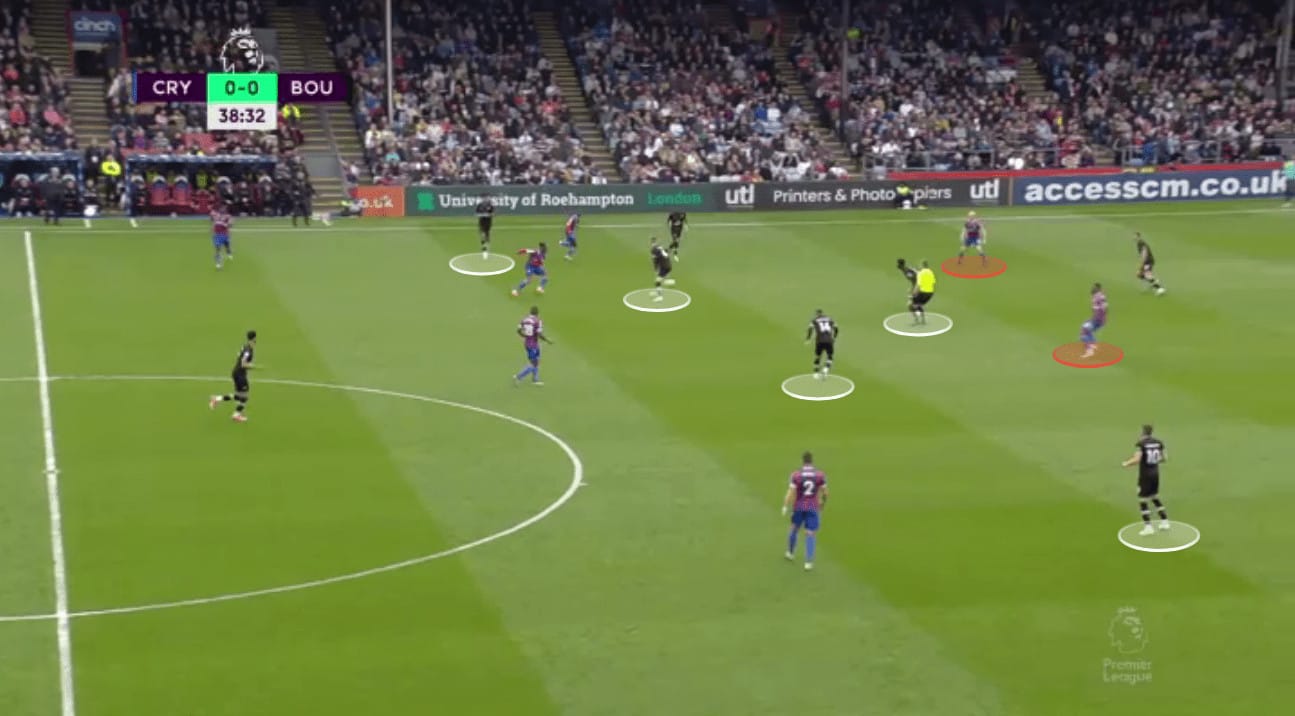
We can take a look at the example above against Crystal Palace, where they sat in a low block, with all their players in their own third.
However, the midfield and defence lines were too separated, causing rival players to receive free in pockets of space behind them or at their blind side.
As we mentioned before, Gary O’Neil occasionally demanded his team to press high in a more man-to-man marking, trying to get the worst side of teams who have issues progressing the ball from the back and forcing them to make mistakes or playing long passes to win the second ball.
It wasn’t regular, but they showed a lot of intensity — especially that Billing-Lerma combination of physical attributes and tactical understanding — to pull the triggers and win the ball high.
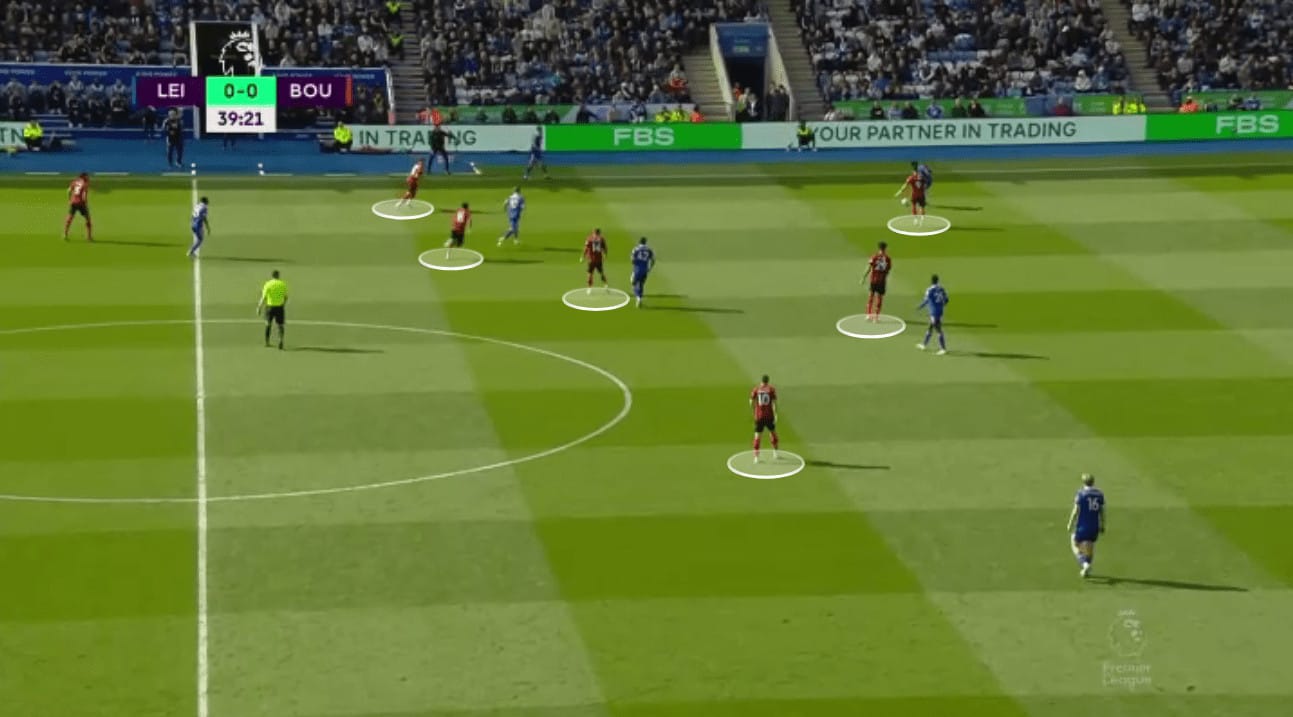
The figure above is a great example that shows us the way Bournemouth raised their block to press at certain moments of the game, with the ball being guided to the wing and rival midfielders being pressed close, man-to-man, to get the ball in that zone and start a counterattack with several players who were at closer distances to press.
However, this wasn’t as coordinated every time as the figure showed us, with some opponents finding more space between this pressure and moving the ball through the lines with ease to sit in Bournemouth’s third quickly.
They were a team that suffered a lot on different points, including the coordination and distances between lines, with midfielders and defenders too separated.
Andoni Iraola would completely change the sight of Bournemouth out of possession, as he’s one of the best pressing managers in the world, combining principles of Marcelo Bielsa, which we’re going to point out later.
Transitions Phase
Bournemouth was a team that focused on transitions; it was their most common way to attack, having rapid forwards to be released into big spaces with through passers like Billing, who was the most regular midfielder to command these.
As we mentioned before, all was thought to create positional attacks in big spaces, and Bournemouth waited for the opponent in their third to steal aggressively and then run fast through the flanks especially.
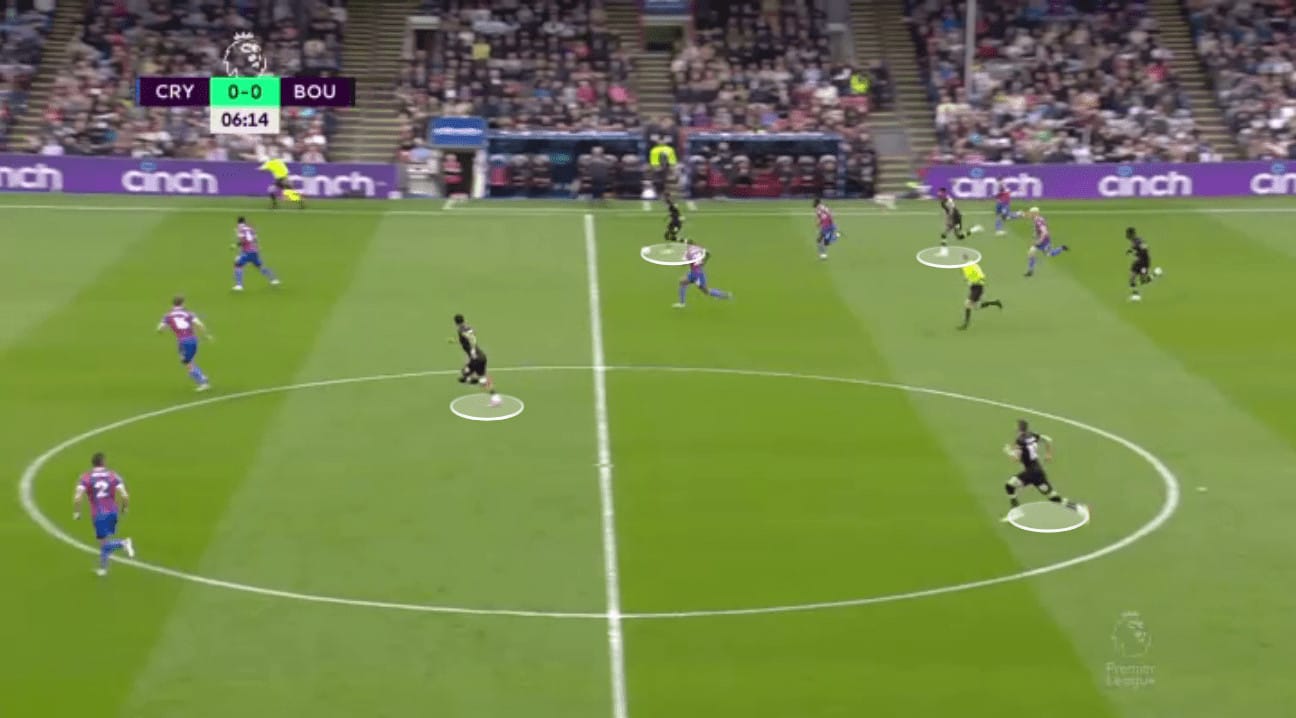
This figure shows how Bournemouth wanted to do damage through their rapid attacking transitions, releasing Dango Ouattara through the left flank where he was a long-dribbler who had the target of looking for Dominic Solanke to finish the play.
However, several players joined in the weak side and offered balance behind if they lost the ball.
In the defensive transitions, Bournemouth were a team that suffered a lot when they lost the ball, especially if they were given space to get higher on the pitch, and then they’d have to return.
Again, they left too much space between defenders and midfielders, and a lot of yards were given to the opponent if they managed to drive the ball forward.
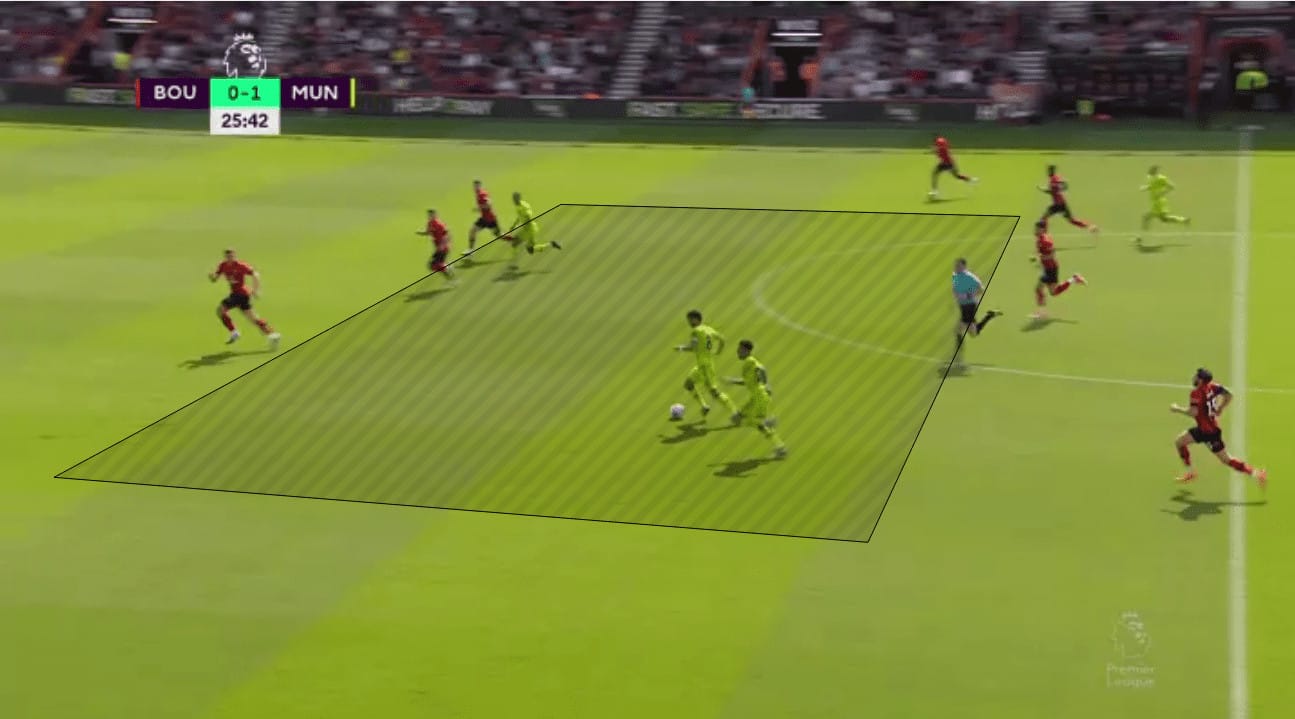
They were the counterpart of both sides, being a very threatening team to leave space on the field, but opponents also caused a lot of damage through these situations.
And with the loss of Lerma and possibly one of Billing pending, this could be an even bigger issue for Iraola.
Iraola at Vallecano and what could that mean for Bournemouth
As we have already given some spoilers of what Andoni Iraola could bring to Bournemouth’s squad, let’s finally dive into what to expect from his Bournemouth side and what we have already seen in their first pre-season friendlies.
Andoni Iraola developed himself as a player, with Marcelo Bielsa being the most relevant coach in his career, as we can see in some of his ideas, especially out of possession.
While he was in New York City, almost retiring, former Crystal Palace manager Patrick Vieira convinced him to become a manager, which he later did.
First of all, we have to look at Iraola’s fascinating high-pressing system, which has stood out to football fans worldwide.
He wants his team to press in a hybrid pressing system, moving man to man and zonally in different areas of the pitch.
We should expect a team with a higher block to defend, compact and intense to press with coordinated runs to guide the ball where they want, generally to the flanks.
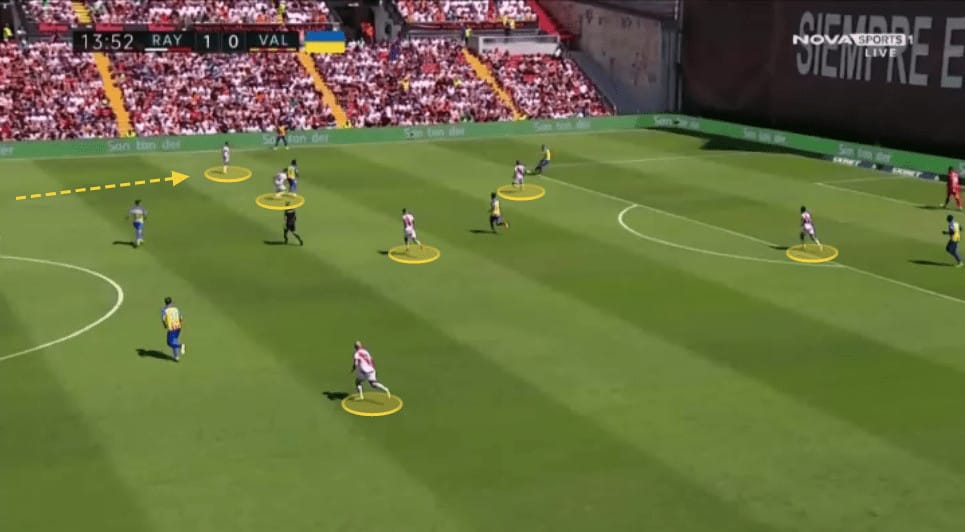
This first figure shows us Vallecano’s intentions from last season; they dominated the rival’s third with several players pressing their first stages of the build-up.
Typically, their shape goes into a 4-4-2, depending on the opponent.
They look to press back-four systems with two forwards that guide centre-backs to move the ball to the wing, offering a trap passing option where wingers and full-backs jump coordinately.
The winger, which is the most advanced player, looks to suffocate and force the rival full-back to lose or launch the ball long or out of play, with the full-back staying behind to step off his line and intercept passes.
Rival midfielders are blocked by their double-pivot and one of the weak-side wingers who get narrow into the central channels.
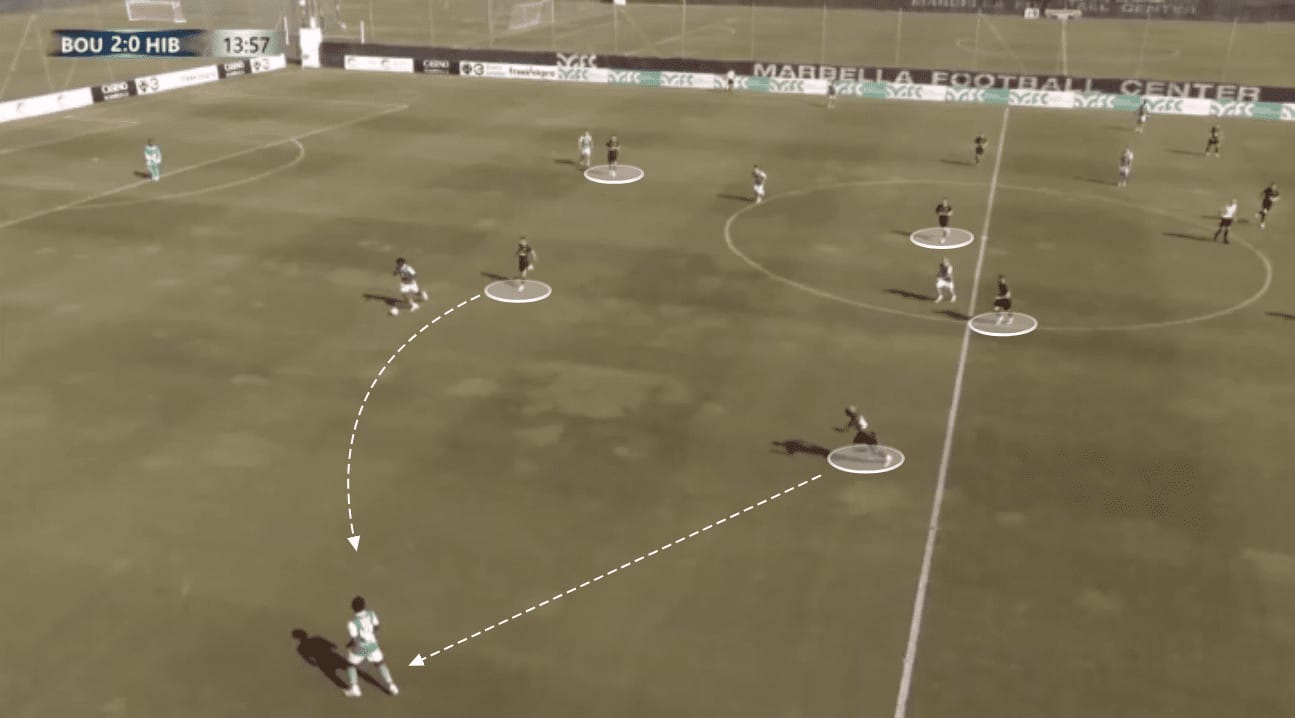
We see above the first tactical glimpses of Iraola’s Bournemouth, with several similar things to what he did at Rayo Vallecano, pressing in a two-forward line with a hybrid pressing system.
Their two strikers guide with their postures and run the ball into the flanks, where the pressing trap activates with the winger going intensely to suffocate there.
Midfielders exchange their markings within zonal and man-to-man responsibilities.
This has been a common thing to see in their two friendlies.
On the ball, the positional and varied ideas from Iraola will change the Cherries massively.
His Rayo Vallecano tended to create a 4+1 pattern in the first stages of the build-up, releasing one of their pivots into the attack.
Another of the tendencies Iraola set at Vallecano was their full-backs, especially the left-back, Fran García who left for Real Madrid this season, activated the wide flanks constantly with dynamism, as well as underlap to penetrate the box and create cut-backs, where Santi Comesaña had the role of arriving into the penalty area, one that would suit Phillip Billing perfectly.
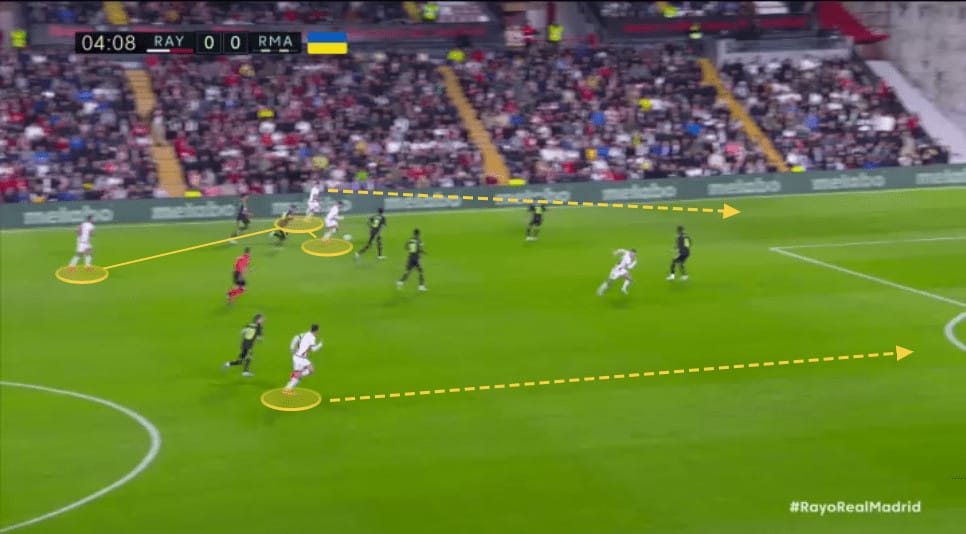
‘Isi’ Palazón was one of the best players, if not the best, with Iraola in charge of the Madrid club.
As an inverted winger, he had a crucial role of stepping into the half-space and helping his team build up in tight spaces with his refined and technical left foot.
The other winger’s role involved penetrating the box and exchanging quick plays with the full-back.
The attacking midfielder, Oscar Trejo, joined midfield and the attack constantly, progressing the ball through the lines with his agile body twists and technique to pass the ball forward, controlling the tempo of the play.
He had a freer role with the ball.
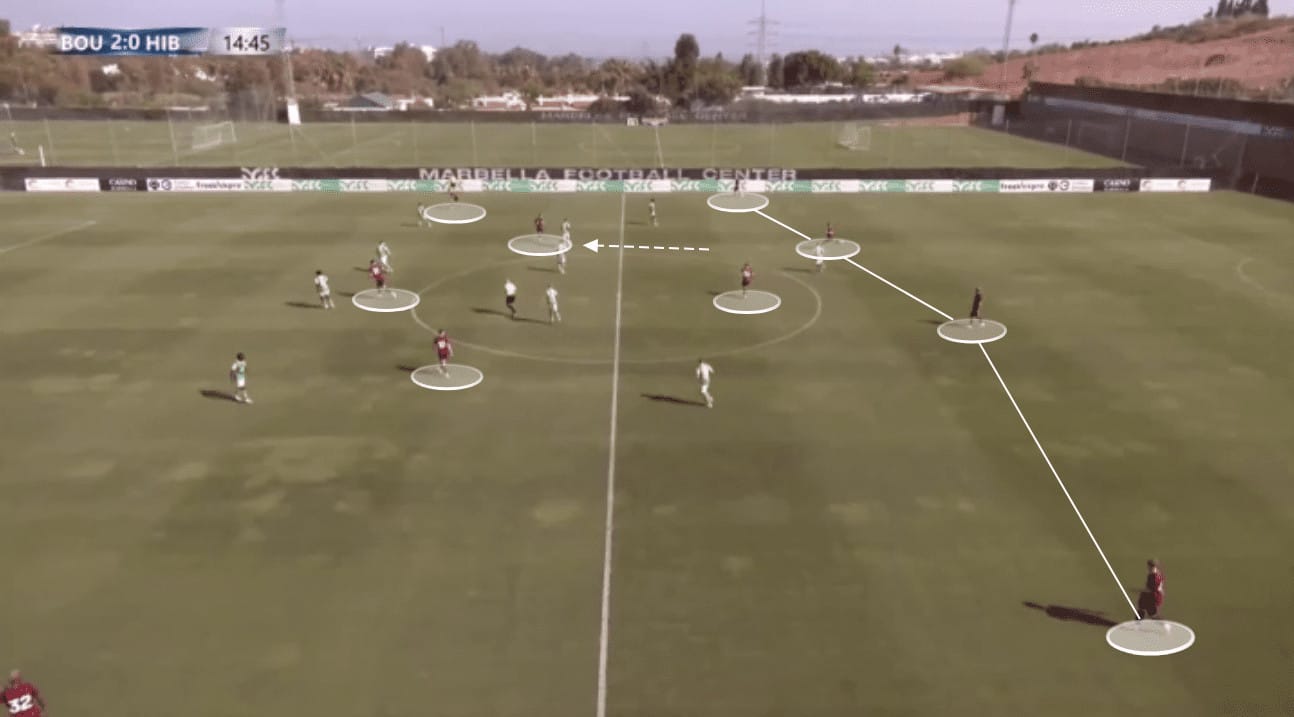
We can see in this last figure that Bournemouth has started to set similar principles in possession, with the 4+1 pattern in the build-up, releasing one of the pivots forward, the ‘10’ floating around dynamically, and their wingers with some differences to what Vallecano did last season, especially with the right winger, which has a similar role to the left winger, constantly exchanging channels with the full-back via quick plays.
However, they haven’t deleted long passes from their patterns, as they have shown in friendlies that they’re going to be crucial for them, activating Solanke and Hamari Traoré/Dango Ouattara into space.
Iraola is a varied manager who likes to dominate the possession more rapidly and fluidly than patiently, with worked off-the-ball movements to shake the rival’s lines.
It is an exciting time for Bournemouth, having one of the best young managers in the world, who is already settling down his ideas in the squad, enjoying a full pre-season but with work to do to keep improving the squad.
Key Player
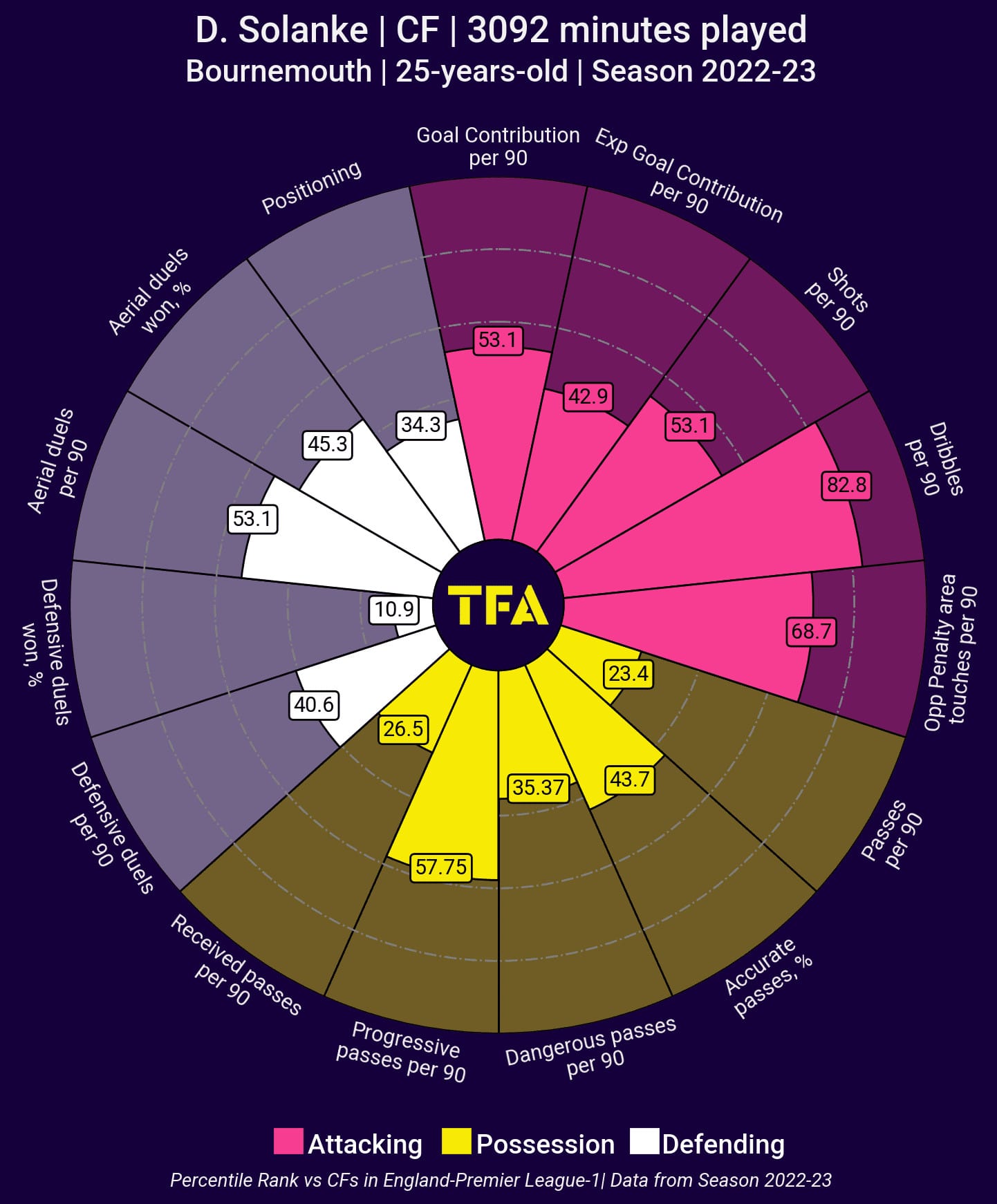
Dominic Solanke surprised the Premier League last season due to his powerful abilities to hold the ball and his intelligence to link up with an opponent on top of him.
He scored six goals in the full season — a respectable number considering the Cherries’ approach and how their football worked.
However, this has to be his crucial season, similar to what he delivered in the previous Championship campaign, where he scored 29 goals.
It’s not the number to expect, but how much he impacted his team that season is what we’re talking about.
He can constantly create threat in the final third with his on and off-the-ball abilities, taking his team to the next level with their ideas.
He fits the idea of the powerful striker that likes to get in behind and play with his back to the goal that Iraola deployed at Rayo Vallecano with Raul de Tomas, so much will be expected of how much he will grow and support the manager’s ideas.
One to Watch
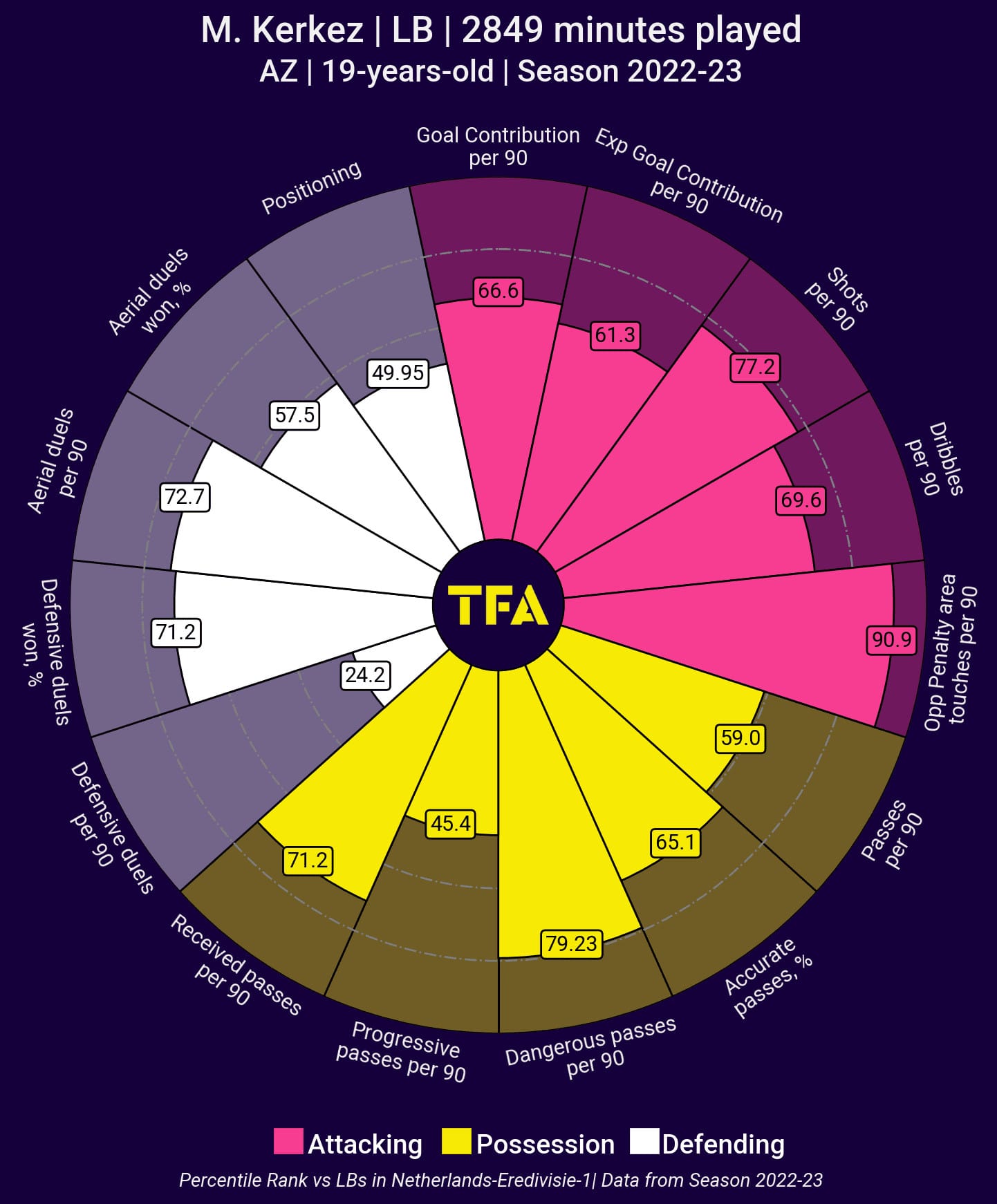
Their most recent signing, Milos Kerkez, has everything to be ‘one to watch’ this season, especially under Iraola’s ideas, where he fits fantastically and means an upgrade to the squad in that position.
Just like Fran García last season, we expect Kerkez to play a vital role for Iraola, getting high on the pitch to overlap/underlap as he’s an intelligent full-back who likes to get into the attack constantly and create threat with his ball-carrying and crossing ability.
He’s one of the best young talents in the position, so it wouldn’t be that big surprise that he would enjoy a joyous first full season, especially with a role that would set him free into the attack, his best trait.
TFA Verdict: 18th
You have to admire the new owner and his ruthless nature.
Gary O’Neil performed a miracle in keeping Bournemouth up and he’s out – Iraola in.
This could be a verdict that ages terribly but I can see the Cherries being relegated ahead of the final weekend – it feels too high risk a move and, as much as I rate Iraola, I can see him leaving before the end of the season and Bournemouth go down.

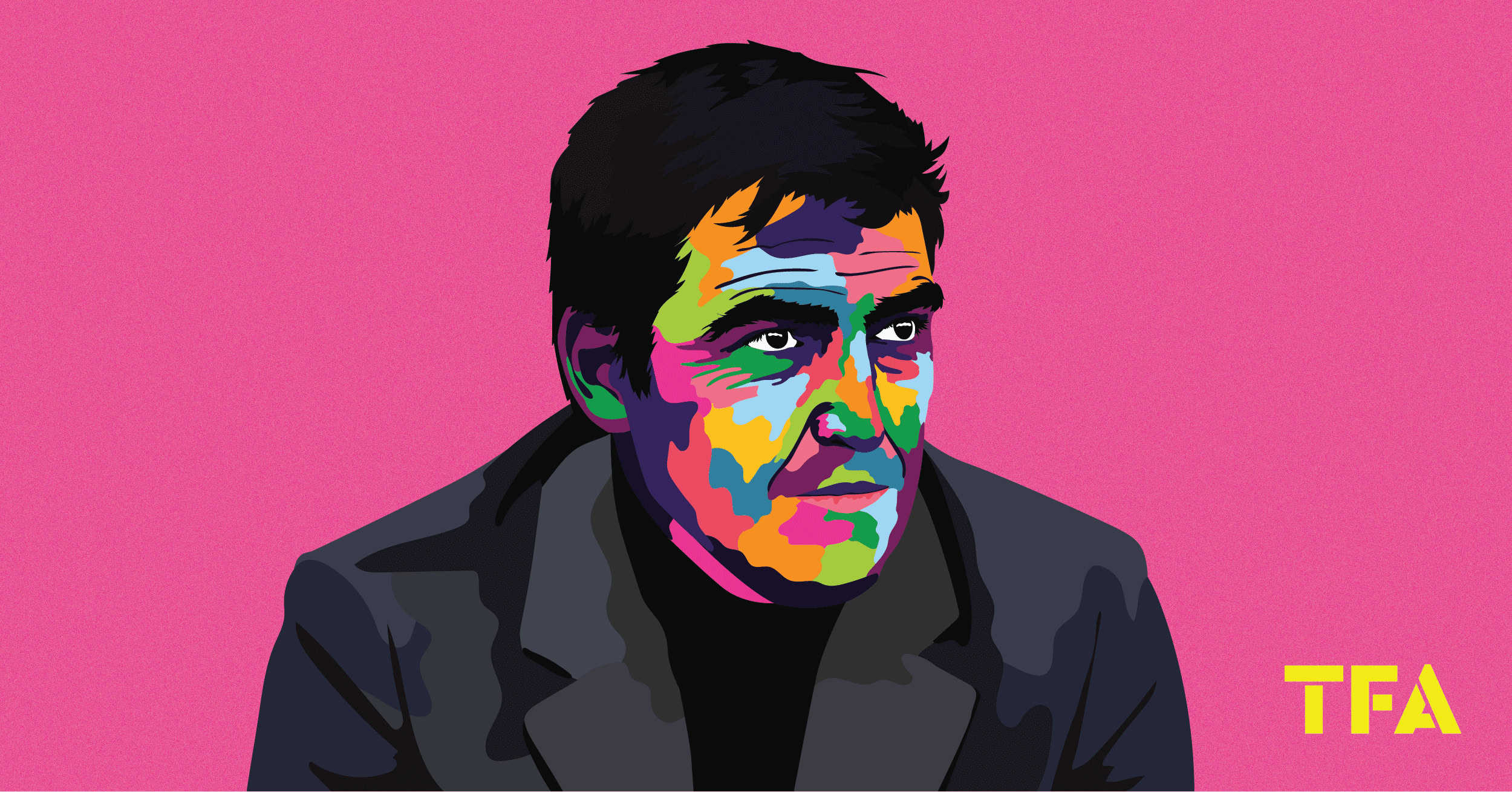




Comments